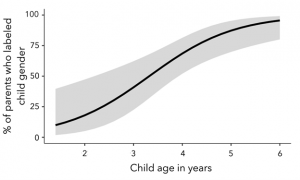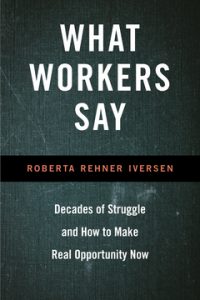
Families in the U.S. already face a myriad of challenges to staying connected, including busy schedules, distractions, and stressors from work and parenting roles. Now, imagine that a family member is incarcerated. The barriers to maintaining familial bonds are even further compounded.
This issue is important to consider as a recent nationally representative study estimates that 45% of the U.S. population (113 million adults) has had a family member incarcerated at some point throughout their lifetimes. The United States is currently the world leader in incarceration with a rate higher than any other nation in the world. Each of the 1.4 million people incarcerated in the U.S. leaves behind a family system. Black, Indigenous, and Hispanic/Latiné families face increased risks due to racial disparities and overrepresentation in the U.S. carceral system. Families with incarcerated loved ones face increased financial burdens as well as mental and physical health deficits. The impacts are felt most fiercely by immediate relatives, such as parents and their children.
Recent reports indicate that nearly half of state prisoners (47%) and more than half of federal prisoners (58%) are parents to an estimated 1.5 million children. Parental incarceration, especially maternal incarceration, has adverse impacts on children, including mental health issues, lower educational performance, and increased likelihood for system-involvement. In fact, one study found that children with an incarcerated parent were nearly two times as likely to become incarcerated in comparison to children without an incarcerated parent.
The additional efforts families must take to stay in contact with their incarcerated loved ones is emotionally and financially taxing. Facilities often charge families and incarcerated loved ones per minute or per call rates with additional fees and surcharges by communications providers. For example, a 15-minute call from a state prison ranges between $0.14 and $4.30, with the average for jails being three times as much. Even sending funds to incarcerated people is facilitated through a private entity (i.e., JPay) and families must pay additional fees to use this service. Many families, especially from impoverished backgrounds, feel financial stressors as their loved ones make little to no income while incarcerated.
In-person visitation is one of the main and most important methods for families to communicate with an incarcerated loved one and maintain social bonds. Research consistently shows that visitation improves outcomes among incarcerated people, both while incarcerated and once they are released. Yet, families often must travel long distances, navigate punitive uncodified and codified policies related to visitation, and cope with a lack of privacy and constant surveillance.
My research with co-authors Drs. Dana DeHart and Cheri Shapiro (University of South Carolina) examined the stressors related to prison visitation through interviews with people incarcerated (n = 77) and family members (n = 21) on the outside in a southeastern state. Most prominently, families described the burdens, or strains and sacrifices, associated with visitation largely stemming from transportation costs (i.e., gas, lodging), food during visitation, and buying clothes to fit the strict dress code. Families also described issues with the scheduling of visitation that made it difficult for them to visit due to their work schedules. One incarcerated woman stated that her husband moved to avoid the 10 hours commute to come visit her in prison. Families also faced the uncertainty of visitation closures without notice due to seemingly arbitrary lockdowns in the facility.
Families also described significant anxiety around the rules and intense environment they faced once at the facility. Strict dress codes were a constant source of frustration and apprehension and disproportionately impacted women visitors. Families reported inconsistencies in the implementation of the dress code rules. For example, one family member stated that she was turned away for an outfit she had worn to visit several times previously. A mother who visited her son remarked, “You’re at their mercy. The rules are subject to change. They treat the inmates like they’re nobody, and when you come in, you’re treated the same way. It’s degrading. The staff have no empathy. It’s like they are desensitized.”
Beyond the stressors families face to enter the facility, they must also endure constant surveillance and lack of privacy. Correctional officers stand guard nearby during visitation. Often, there are restrictions on how long families can touch or embrace–imagine how this could impact critical parent-child connections. Other restrictions can extend to how often family members are able to stand or use the restroom.
Despite the barriers and stressors, families in our study discussed the importance of in-person visitation in maintaining familial bonds. Visitation provided time and space to talk, play board games, navigate parenting roles, and discuss responsibilities to the household. A wife who visited her incarcerated husband said, “[During visitation], they’re able to learn about their father themselves. He’s showing them how to love and embrace. They don’t even complain [about visiting]. I’ve seen changes in them. The cutest thing is them whispering in his ear. He sits there and smiles a big smile.”
Our findings highlight the immense challenges families impacted by mass incarceration face to maintain bonds. Several policy recommendations are derived from these results. Families must be provided support to overcome the financial burdens associated with communication. Such impacts are especially felt among families with low-income and historically marginalized backgrounds who are disproportionately likely to be impacted by mass incarceration. Also, increased consistency and transparency in rules and visitation closures would help ease anxiety and tension.
Facilities across the U.S. have decreased or even eliminated in-person visitation, especially since the COVID-19 pandemic due to understaffing issues. The findings from our study demonstrate the importance of in-person visitation to support non-verbal communication and physical touch that help support familial bonds. As families are often incarcerated people’s main source for reentry planning, including where they reside upon release, maintaining visitation is vital to public safety in the community, as well.
We hope our post helps shine light on the experiences of families impacted by incarceration. Their stories should be heard and considered among policy makers in relation to sentencing and release policies.
Word count: 998
You can find the full article with the study mentioned here:
Boppre, B., DeHart, D., & Shapiro, C. (2022). “The Prison System Doesn’t Make It Comfortable to Visit:” Prison Visitation from the Perspectives of People Incarcerated and Family Members. Criminal Justice and Behavior, 49, 1474-1494. https://journals.sagepub.com/doi/full/10.1177/00938548221094823
Bios:
Dr. Breanna Boppre is Assistant Professor of Victim Studies at Sam Houston State University in Texas. She was also the child of incarcerated parents. You can follow her on Twitter @bree_bop










